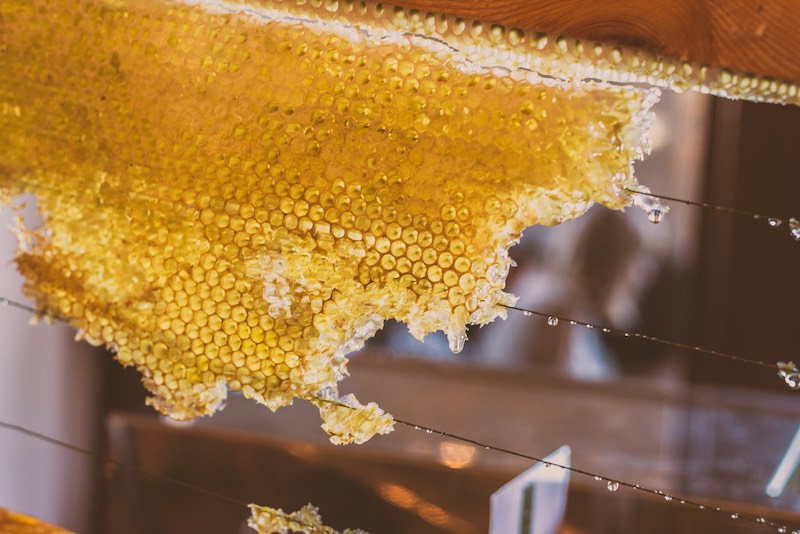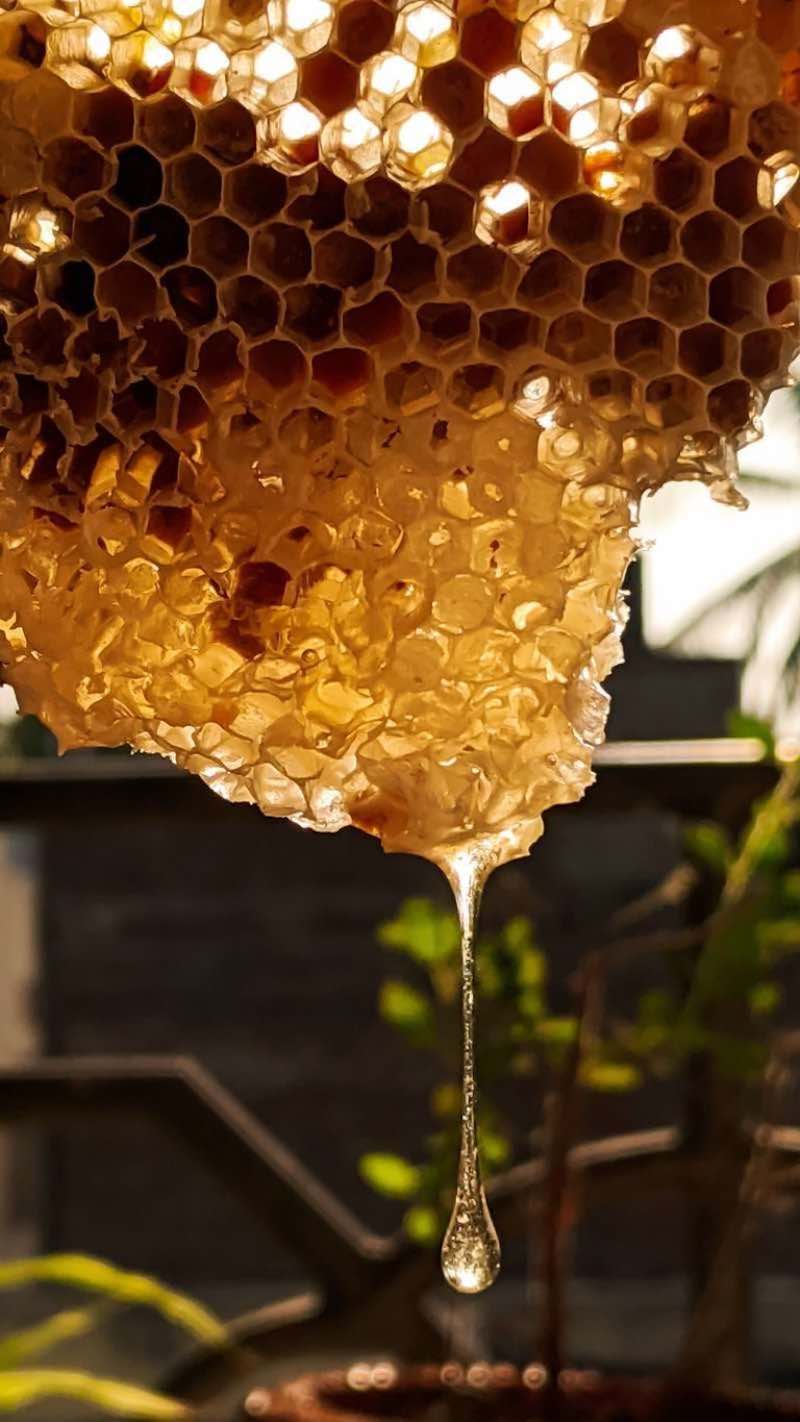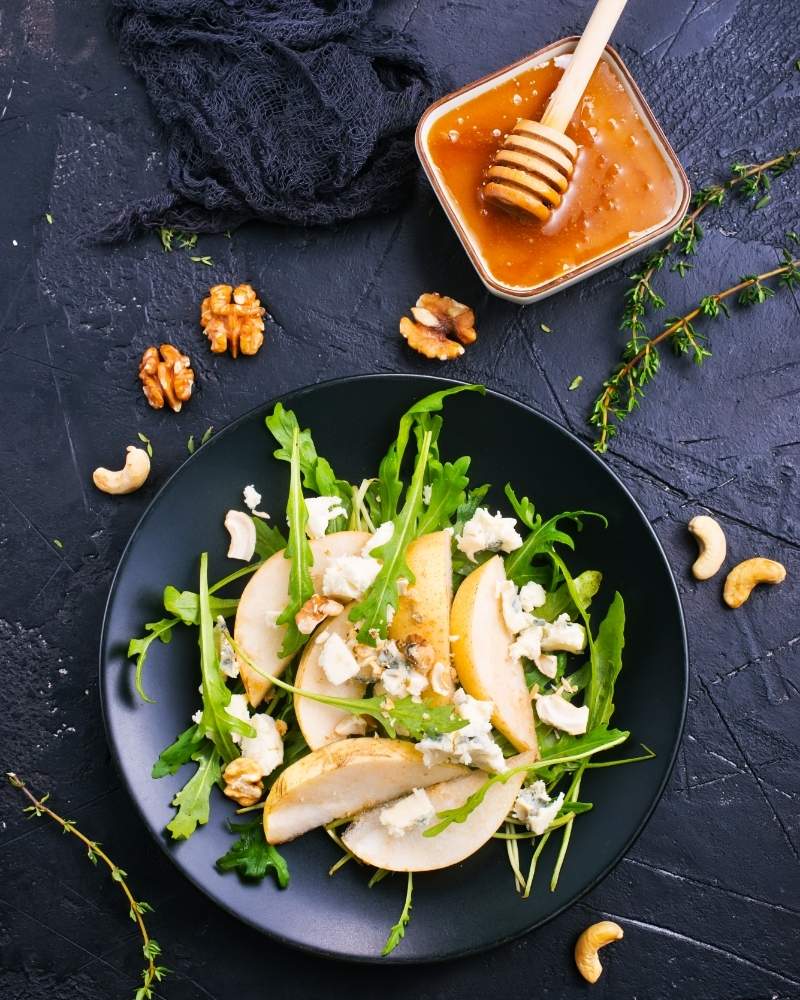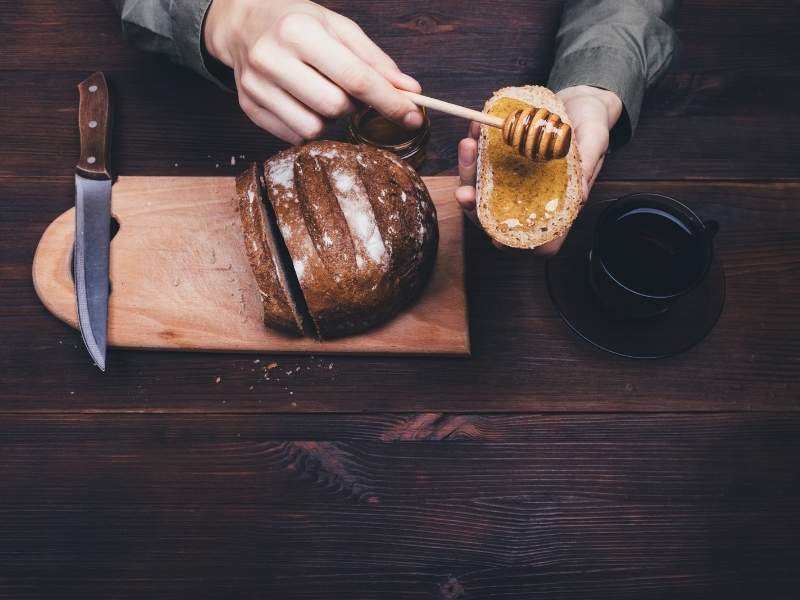Can you eat honeycomb? Yes! Not only are they edible, but they’re extremely delicious as well! The soft, chewy, jagged wax comb encased in sweet, tangy honey is something dessert-loving foodies wouldn’t want to miss out on.
RELATED: What’s The Buzz On Bees? | Beekeeping Info For Savvy Homesteaders
Can You Eat Honeycomb? 5 Benefits You Should Know
1. Honey is a Healthy Sugar-Alternative for Diabetic Patients

Honey isn’t necessarily healthier than sugar, but it’s much sweeter. You'll need less of it to make your drinks and foods sweeter.
Plus, there are research claims that honey and beeswax may be able to reduce insulin resistance. In fact, a 2013 study on 50 nonalcoholic fatty liver disease (NFLD) patients reveals that continuous supplementation with beeswax alcohol can improve your sensitivity to insulin.
Note, however, that honey can still raise blood sugar levels, so patients need to be careful with the amount of honey they consume. Stick to around two to three drops if you are at risk of diabetes.
2. Honeycomb Is Loaded With Nutrients

Honey is at its most nutritious when it’s raw and freshly harvested. Exposure to different elements drastically decreases its nutritional value — this is why store-bought honey isn’t as nutritious anymore.
Fresh honeycomb bars are rich in all kinds of nutrients and minerals such as:
- Carbohydrates: Honeycomb bars are rich in energy-boosting carbohydrates. A few chunks of these are more than enough to give you the power you need to start and end the day like a true champion.
- Antioxidants: Generally, antioxidants are agents that combat free-radical damage in the body. The body produces free-radicals whenever you eat unhealthy foods, smoke cigarettes, or binge drink alcohol.
- Protein: The human body needs sufficient amounts of protein to build and repair muscles on a daily basis. People mostly source these from milk and meat, but honeycomb bars also contain good amounts of protein.
- Vitamin C: This is a very important vitamin that plays a vital role in tissue repair and growth.
3. Beeswax Helps Support Liver Function

A 24-week study was conducted on patients with liver diseases to see how their bodies would react to beeswax alcohol. Half of the group took beeswax alcohol. Meanwhile, the other half didn’t.
The results show that 48% of the group that took beeswax alcohol experienced a decrease in symptoms such as nausea, bloating, and abdominal pain. Meanwhile, only 8% of the patients who didn’t take beeswax alcohol got better.
4. Honey Helps Fight Certain Infections

The high vitamin C and antioxidant content in honeycomb bars make them a possible deterrent against various viruses and diseases. Remember: your immune system is your first line of defense.
To maximize the disease-fighting effects of honeycomb, opt to mix in other nutrient-dense fruits filled with antioxidants such as berries, oranges, grapes, apricots, and mangos, among others.
5. Honey Can Help Ease Coughing in Children

Do you always hear your kids coughing and complaining about having an itchy throat? Apart from the regular cough syrup, try supplementing with honey.
Research shows that drinking honey can possibly alleviate coughing in children. In fact, a two-day study on 105 children aged 2 to 18 years old suggests that honey may be used as an additional supplement, or even replacement, to cough syrup.
The idea behind the study was to feed the children half a tablespoon of honey before bedtime and compare the results with those who took cough syrup. Apart from the reduced coughing, results showed that the children who drank honey also slept more soundly.
Disclaimer: Honey has no therapeutic claims and should not be used to treat patients suffering from upper respiratory tract infections. Also, honeycomb cannot be fed to infants under one year old.
RELATED: 11 Honey Recipes | Ways To Cook With Honey
Where Can You Use Honey on Food?
1. Use as Salad Topping

Skip the high-calorie, preservative-pumped salad dressings and opt to top your greens off with crushed honeycomb! It's a much healthier, more affordable alternative.
Take your honeycomb bars, crush them with a mortar and pestle, then sprinkle all over your salad. To make the salad taste even better, opt to throw in some almonds, cheese, or pecans.
2. Slide Into Sandwiches

Mixing honeycomb bars into sandwiches creates the perfect blend of sweet, chewy honeycomb and salty, savory meat topped off with warm buns and fresh, crunchy greens. Honey pairs well with meat options such as salami, sausages, ham, bacon, and even beef patties.
3. Serve With Cheese

Take your cheese platter to the next level by adding in some honeycomb bars! The delicious combination of creamy, salty cheese and sweet, tangy fresh honey would surely leave a smile on your face.
Complete your platter with almonds, sausages, nuts, grapes, and salami. Feel free to explore cheese board alternatives that would pair well with sweet, rich, thick honey.
Tip: Take a sip of red wine after each bite from the cheeseboard for an elevated snacking experience!
4. Breakfast Toast Spread

Sick of mayonnaise, jam, or fruit preserves on toast? If you're looking to try something different, opt to top off your breakfast toast with some delicious honey!
There are two ways to enjoy toast with honey. First, you can crush the honeycomb and drizzle it all over your honey-coated toasted bread.
Or, you can opt to place chunks of honeycomb bars on top of the toast. This is ideal for those who want to savor the soft, chewy honeycomb texture on top of the crunchy breakfast toast.
Can you eat honeycomb? Of course! Check out this video by Tastemade where they share three tasty ways to eat honeycomb:
The next time you extract honey from your bee farm, don’t discard the honeycombs. Set them aside for your desserts and treats. They’re both nutritious and delicious!
Also, feel free to explore other ways to eat honeycomb. A quick Google search of “can you eat honeycomb” online will reveal dozens of ways how to enjoy this smooth, creamy, tangy goodie.
Have you ever eaten honeycomb before? Share with us your favorite ways to eat, use, and cook honeycomb!
UP NEXT:
- 11 Healthy Honey Recipes To Sweeten Up Your Week
- Is Adulterated Honey Real? | Bee News
- Ultimate Guide To Raising Ducklings For Beginners
Fellow homesteaders, do you want to help others learn from your journey by becoming one of our original contributors? Write for us!

Leave a Reply